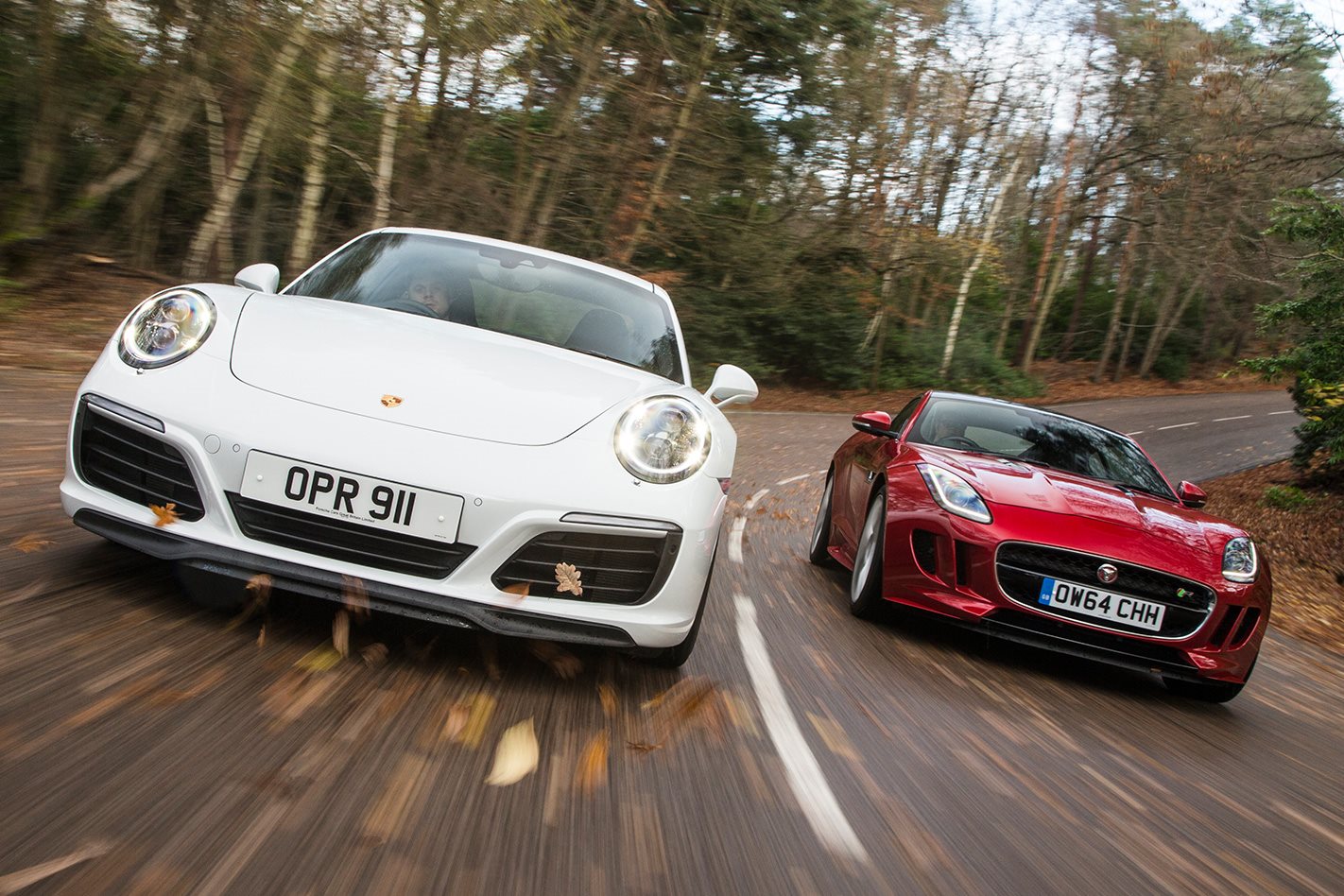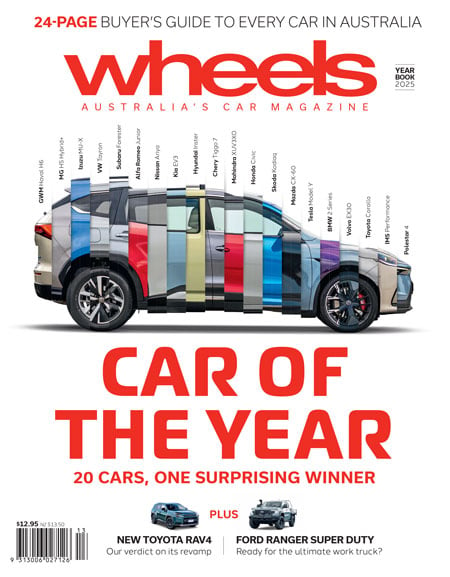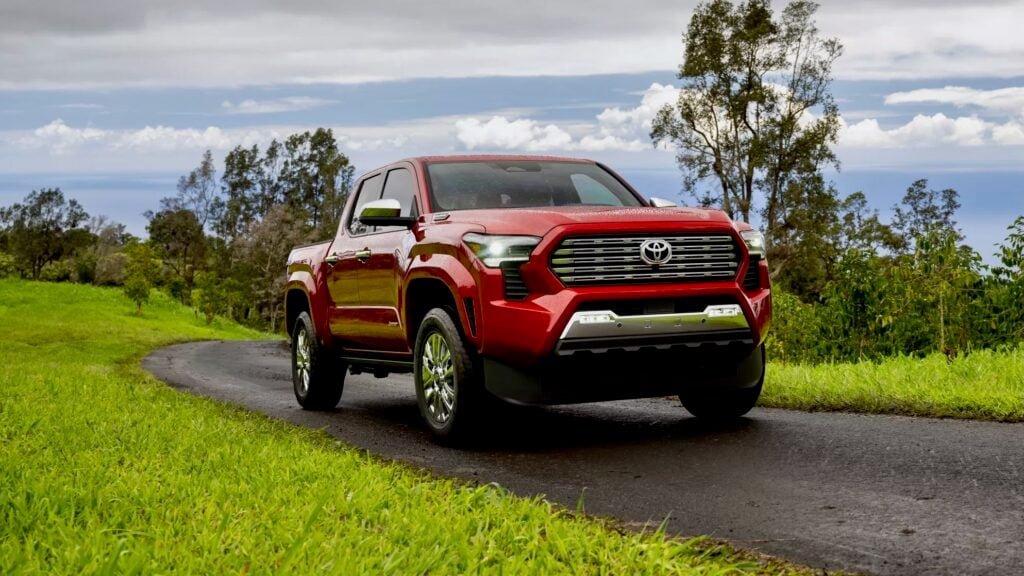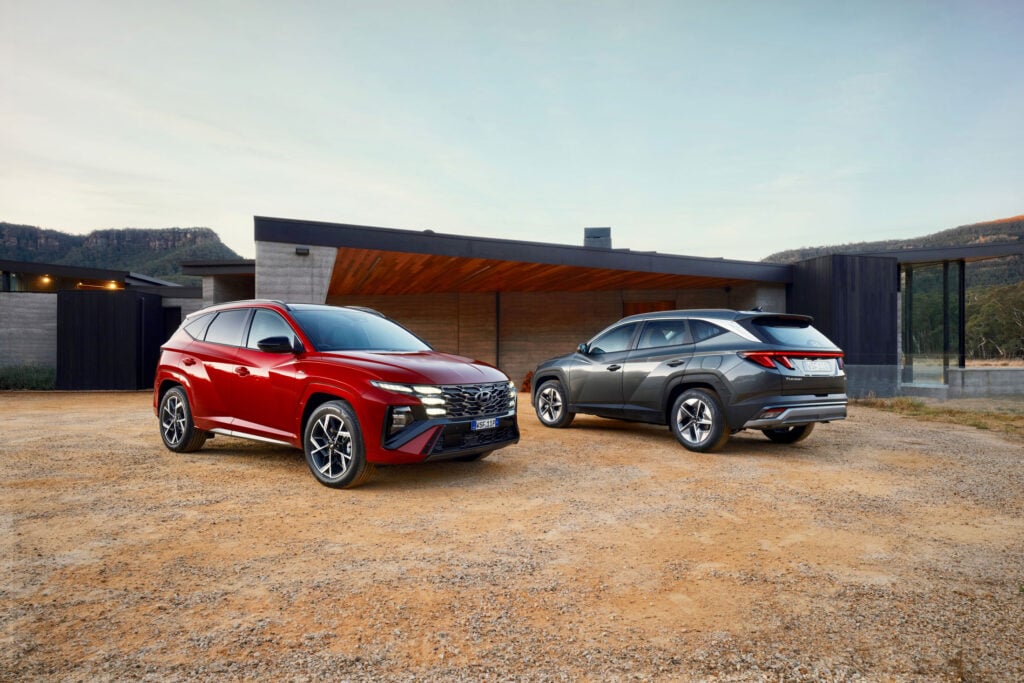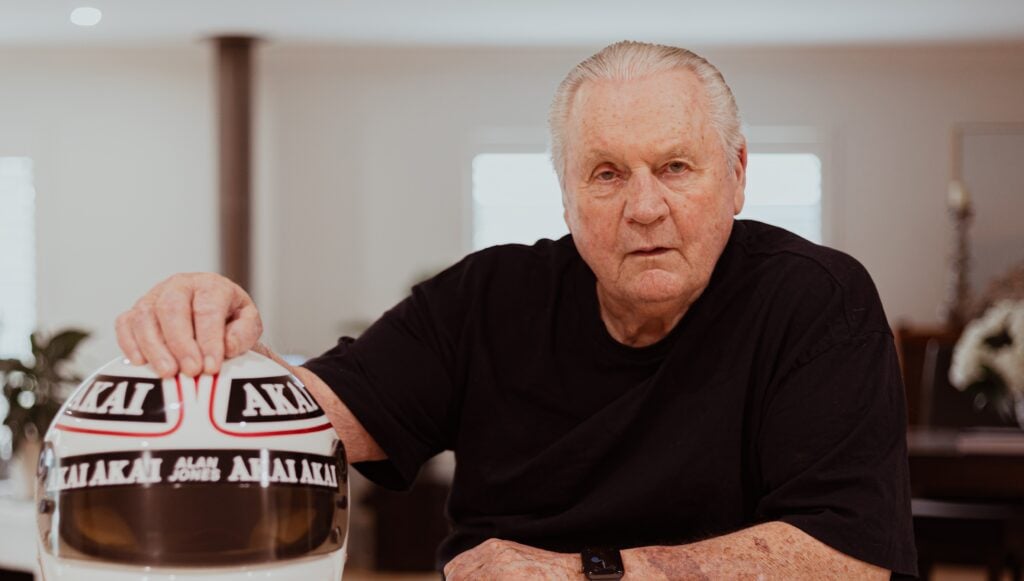There is an awful lot of navel-gazing being done about the new Porsche 911.
Few sections of the car enthusiast community are more prone to such things than Porsche devotees. It’s Weissach’s punishment for making the world’s greatest sportscar – on and off, but mostly on – for more than half a century that any significant change to it will also be regarded as contentious.
With the 996 generation of the 911, the cue was water cooling; with the 997, direct fuel injection; with the 991, a lengthened wheelbase and electromechanical power steering. And now, with the facelifted 991, it’s those contemptible, new-fangled turbos. How dare they?
The fact remains, though, that whether or not you like the idea of what Porsche has just done under the engine cover of its perennially blooming rear-engined sportscar, it has just gone and done it.
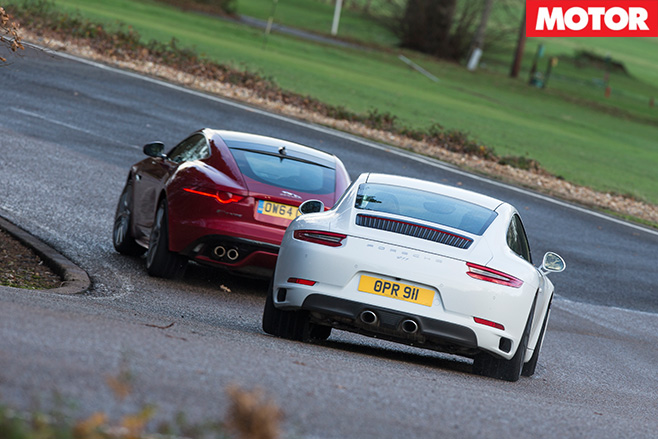
Just over $30,000 separates the list price of the Jaguar ($226,580) and the Porsche ($258,750), the 911 in high-output PDK transmission-equipped Carrera S form, which allows these cars to compete fairly and squarely. But on paper, the F-Type has a conspicuously large advantage on not just outright power but also power-to-weight and torque-to-weight ratios, even after the Porsche’s forced-induction makeover. It’s 404kW facing off against 309kW here.
Then again, 911s have become famous for overhauling such disparities. In fact, the bigger test for the Porsche’s new flat six may be provided by the effusiveness of Jaguar’s supercharged 5.0-litre V8, a telling examination of combustive character that, even the most committed moderniser would admit, has been eaten away in the Porsche’s case by the addition of turbochargers.
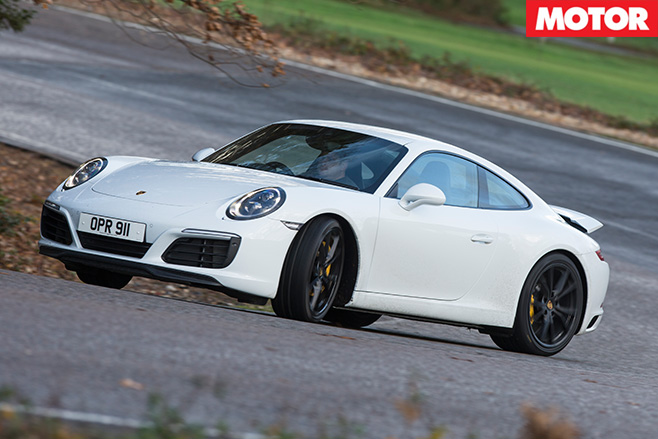
At the rear, the differentiation is slightly easier to spot. There’s a new, more retro-looking air intake screen, a wider pop-up spoiler and new air outlets for the twin intercoolers just aft of the rear wheels. Otherwise, the Porsche’s shape is classic 911: still fairly narrow and cabin-forwards by sporting standards, but nicely compact and curvaceous. It’s utterly distinctive, in other words – in spite of the effect of the car’s popularity or our familiarity with it.
An F-Type R Coupe strikes a very stark contrast indeed. The Jaguar’s bigger, squarer body volumes, greater width and more blistered forms offer less visual subtlety and more muscle. It is somehow less prepossessing than the 911 and at much greater pains to be looked at. The long bonnet and fastback rear end pay homage to classic sportscar design type, whereas the Porsche wilfully disregards it.
What we have here are differing routes to the design of equally appealing machines. Two years ago you’d probably have given the Jaguar the edge as a simple object of desire, but now – for reasons I can’t quite put my finger on – I wouldn’t. Perhaps the 911 just ages more gracefully.
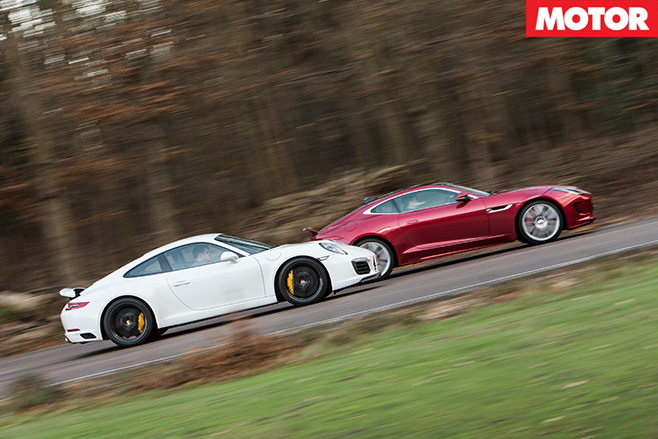
But the 911’s cabin isn’t without richness or sense of occasion, its high centre console putting the gear selector at a convenient height. Smooth leathers, solid plastics and attractive decorative trims conjure a lasting impression of quality and understated elegance.
Among the material changes brought in with the facelift are a new, smaller-diameter steering wheel (still round, praise be, and feeling great in your hands) and a swish infotainment system with a larger display (which looks and operates much more like a modern smartphone does, and is all the easier to use because of it).
And so, on those all-important one-up, scenic-route weekend drives, you’d most likely find the Jaguar the more pleasant place to be… just. The rest of the time, though, the Porsche’s occasional back seats and greater carrying capacity would make it the much more usable car. What’s more important? You tell me.
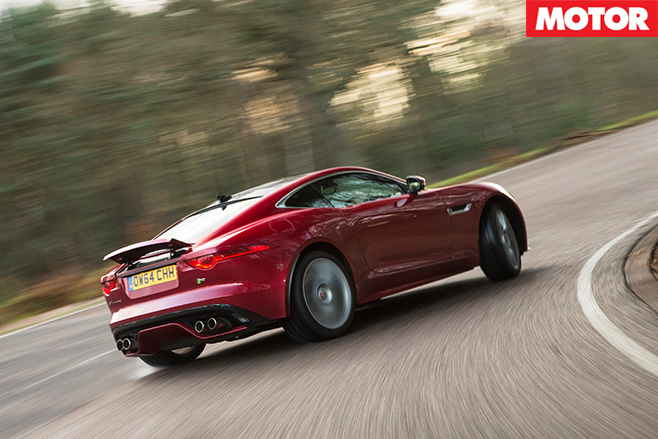
Here comes surprise number one: the new 911 Carrera S is a very fast sportscar. That may not sound like a huge revelation, but before this car, Porsche had never made a ‘normal’ 911 (one without a Turbo or GT-series badge on its rump) capable of hitting 97km/h from rest in less than 4.0sec. This one is, and by no small margin.
A full road test on the car is to come, but we can reveal now that, equipped with a PDK transmission, Sport Chrono Plus and launch control, the new Carrera S took a scarcely believable 3.5sec to hit 97km/h in our hands. It’s quicker than a 996-generation Turbo, then, and quicker even than a 997 GT3 RS. Believe it.
The mid-range torque of turbochargers is only one of many factors that explain the car’s big-hitting pace; excellent traction and a quite astoundingly good two-pedal gearbox are two of the others. The engine and transmission work together brilliantly when you ask for every drop of available acceleration, and while the turbos add urgency and flexibility to the power delivery at lower revs, they cost the car relatively little on its high-rev range.
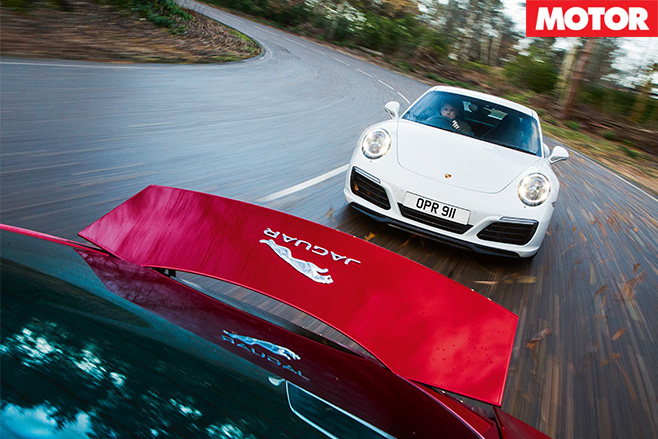
For all of its power and bellowing V8 noise, the F-Type R Coupe feels much heavier than the 911 Carrera S, and although it goes hard, it quite clearly can’t match the outright pace of the Porsche – our timing gear clocking it at 4.4sec to 97km/h at best. The 911’s thick wave of torque makes the Jaguar feel just a little bit peaky, making you wait until 3500rpm for its full portion of twist, whereas the Porsche delivers it below 2000rpm.
At times, traction limits the amount of power you can use in the F-Type. At other times, it’s Jaguar’s eight-speed automatic transmission, which doesn’t have the same shift speed or instinct for the perfect ratio as the Porsche’s seven-speed PDK. Either way, the Jaguar always seems to have a ready-made excuse for not quite keeping up with its German opposition.
You may not think it needs one, of course. What the F-Type R is brilliant at is bowling along at an arm’s length from full speed – at that easily maintained, big-distance-covering, seven-and-a-half-tenths kind of pace that feels brisk but still responsible on the road. As anti-social as it sounds at full throttle, the car’s V8 filters a more measured but still wonderfully sonorous warble into the cabin under part-throttle, with the active exhaust set to ‘naughty’ mode. For that reason alone, it would make a broader spectrum of journeys feel more special than the 911’s six-pot might, being in possession of that little bit more soul.
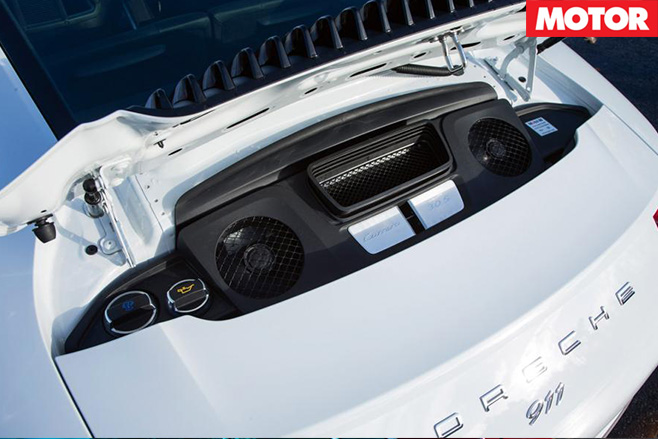
There’s no doubt the exhaust note is missing some of the audible detail that long-time owners will be used to. That tappetty, spluttering idle is present but muffled; the fizzing chatter of the valve train is less obvious at high revs, too. And yet the powerplant still offers a much greater operating rev range than a directly comparable V6, greater mid-range balance and smoothness, and – in spite of some barely detectable turbo lag at low crank speeds – remarkable responsiveness for a turbocharged engine.
Add to that greater performance and usability, plus the advantage enjoyed by the 911 on ride and handling sophistication over the F-Type, and you’re led inexorably to wonder not how much corruption and compromise turbocharging has already brought to the 911, but instead how much more it could endure and still be as good as untouchable within its niche. Because the Carrera S’s chassis is better than ever. It’s flatter-handling and more composed, retaining just enough compliance for a supple ride but laudable crispness in response to steering inputs and idiosyncratic trailing-throttle handling adjustability for those who go in search of such things. Put simply, it is brilliant.
The changes made to the facelifted 911’s suspension range from new dampers, anti-roll bars and helper springs to retuned adaptive damping software. What matters here is that, feeling light on its feet, fluent but controlled over bumps and incisive and balanced through corners, the Carrera S is a chastening lesson to Jaguar about how a multi-talented, mature and well-rounded sportscar and occasional GT really ought to conduct itself.
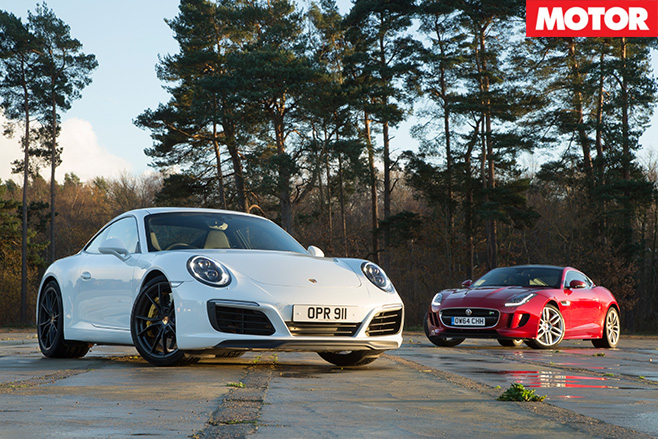
Lighter, more incisive and more communicative steering makes the 911 Carrera S keener to turn in, while greater traction also makes it more confidence-inspiring as you accelerate out of corners. In meaningful terms, the Porsche outhandles the Jaguar without breaking much of a sweat and, moreover, has better control of body pitch than any of its predecessors.
The F-Type R is a more stable high-speed motorway car, thanks to the bulk of that supercharged V8 engine, and it offers plenty of rear-driven handling adjustability of the sort that you have to drive the Porsche much harder to access. But when push comes to shove and a slippery corner follows a sudden crest and an uneven braking area, you’d rather be driving the 911 Carrera S.
| u00a0 | PORSCHE 911 CARRERA S | JAGUAR F-TYPE R COUPE |
| Body | 2-door, 2-seat coupe | 2-door, 2-seat coupe |
| Drive | rear-wheel | rear-wheel |
| Engine | 2981cc flat-6, DOHC, 24v, twin-turbo | 5000cc V8, DOHC, 32v, supercharged |
| Power | 309kW @ 6500rpm | 404kW @ 6500rpm |
| Torque | 500Nm @ 1700-5000rpm | 680Nm @ 3500rpm |
| Transmission | 7-speed dual-clutchu00a0 | 8-speed automatic |
| Weight | 1460kg | 1655kg |
| L/W/H | 4499/1808/1296mm | 4470/2042/1321mm |
| Steering | electrically-assisted rack-and-pinion | electrically-assisted rack and pinion |
| Price as tested | $258,750 | $226,580 |
| Pros | Formidable pace; brilliant handling; upgraded interior | Awesome engine; playful handling; great looks; value |
| Cons | Slight loss of character in the switch to turbocharging | Outgunned by the sheer brilliance of the 911 |
| Star Rating | 4.5/5 | 4/5 |

